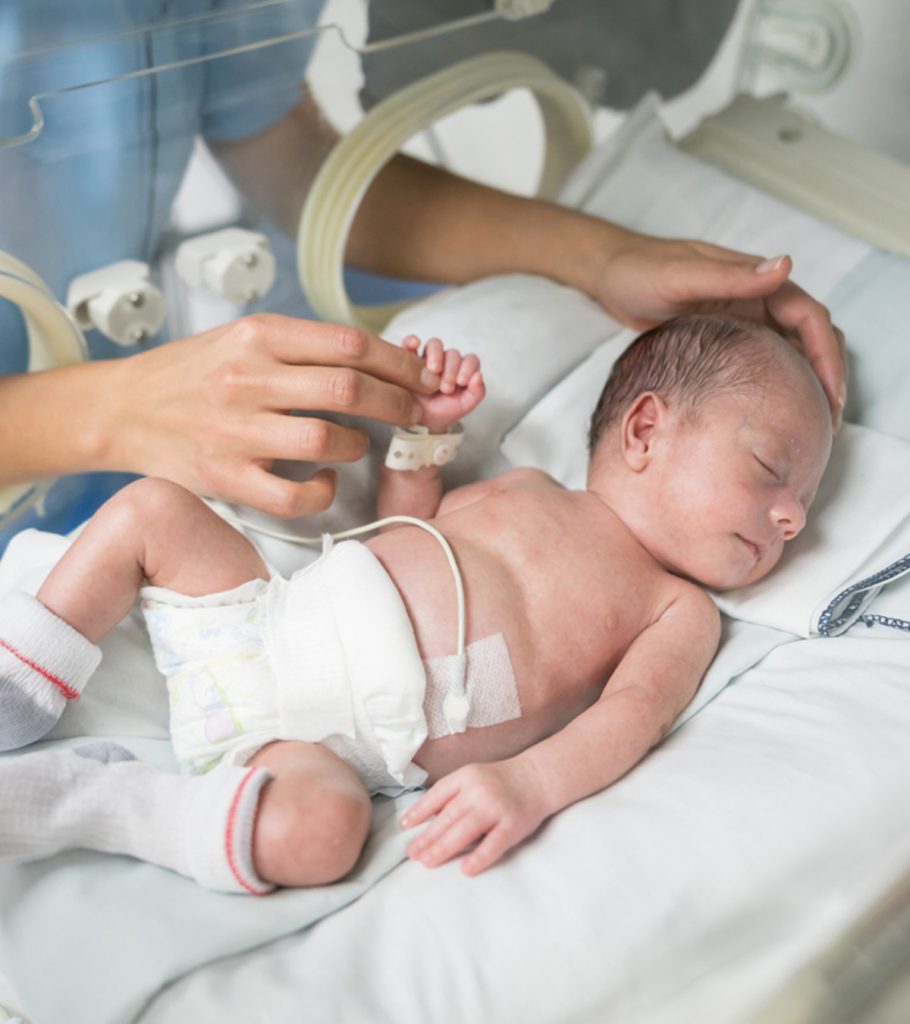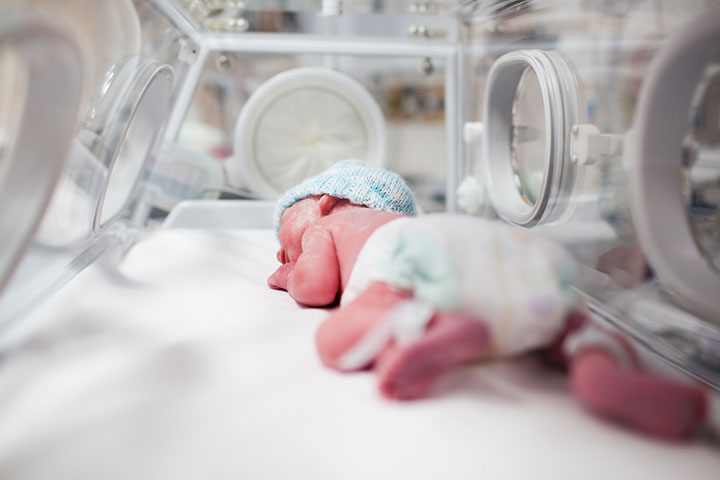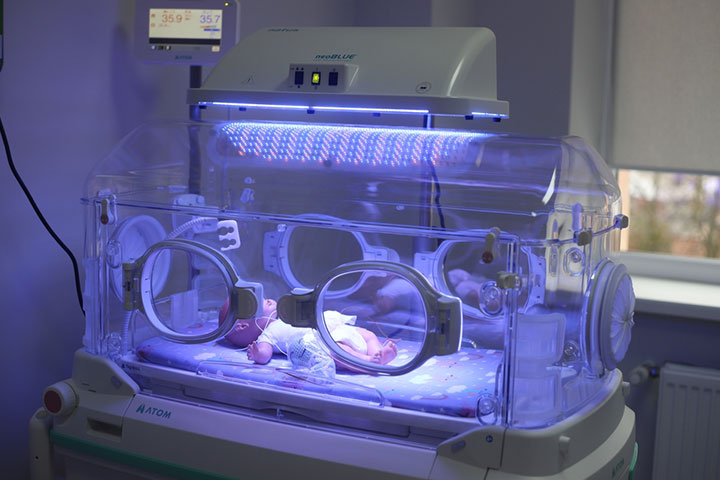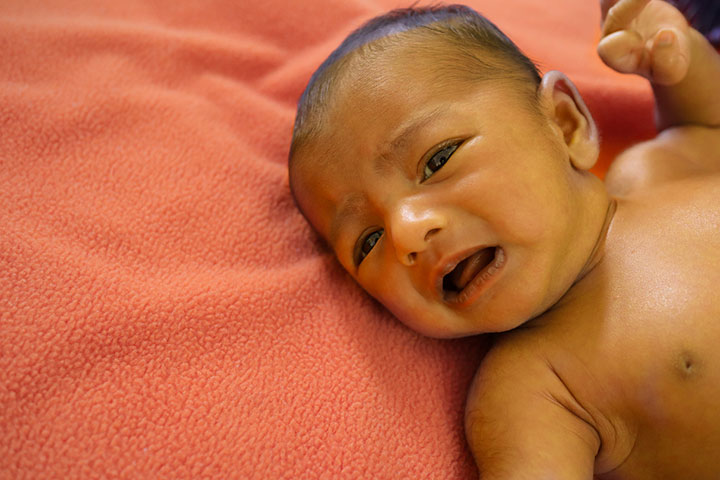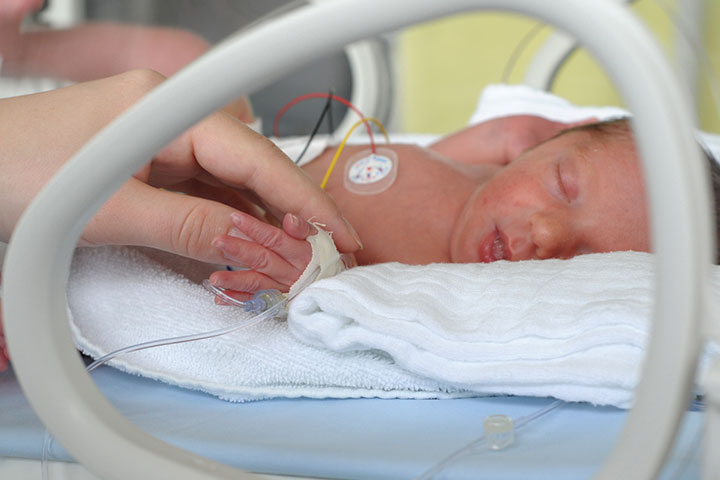Preterm babies who are ill may require additional care and support to survive after birth. Incubators for babies might be used based on how early the baby is born and how well their systems are developed. Most premature babies who need special care could be placed in incubators in a separate setup called the neonatal intensive care unit (NICU).
As a new parent, you may have several queries and concerns on the need and uses of incubators in babies. Read on to know more about the details regarding the use of incubators in babies in a NICU.
What Does An Incubator Do?
An incubator is an integral part of the NICU. The biomedical device appears like a box or a clear glass bassinet and helps in providing medical care to the newborn by providing an environment similiar to the mothers womb, keeping them warm and protecting them from allergens or environmental pathogens. Incubators are equipped with devices that provide the baby with a controlled environment by regulating the temperature, humidity, and oxygen. They also have hand-access ports with doors to meet the baby’s nursing or other medical requirements (1).
Incubators also tune out excess noise, which may cause sleep disruptions, unnecessary stress, or a rise in the baby’s blood pressure. Thus, an incubator helps eliminate extraneous stressors, such as temperature fluctuations and noise, and allows physicians to provide better healthcare to a baby.
Different Types Of Incubators
Depending on the babies’ needs, various types of incubators are used in neonatal intensive care units (2).
- Open incubator: It is also known as a radiant warmer or open-box incubator and is open from the top. The baby is usually placed on a flat surface with a heating element placed below or above the baby. The incubator is equipped with other devices, too. The infant warmer is generally used to maintain the temperature of the just born baby for a few hours. Since the incubator is open, the humidity control is not as good as in the closed incubator, nor is there protection from pathogens in the environment. Although this incubator allows more physical contact with the baby, it is not ideal for babies who require germ protection (3).
- Closed incubator: It keeps the baby completely enclosed within the incubator. The closed or closed-box incubator has hand-access ports that allow the caretakers to administer medicines and IVs when required. It provides better heat circulation and temperature control than an open incubator. Oxygen can be given easily through prongs or an oxygen hoodiXA dome-shaped instrument that provides warm, humid oxygen inside.. In a closed incubator, the humidity and temperature can be controlled manually or through skin-based sensors. Minimal contact with the medical personnel and environment provides a sterile environment (3).
- Double-walled incubator: Some closed incubators feature dual walls to maximize heat and humidity retention. Like a closed incubator, a double-walled incubator also creates a more controlled and protected microenvironment for the baby (4).
- Servo-controlled incubator: It is a type of closed incubator that works on an electronic feedback system. It automatically controls the temperature and humidity based on the readings of the sensors attached to the baby’s skin. It is much more beneficial in providing a controlled environment to the baby (5).
- Portable incubator: This incubator is used to shift babies from one area, location, or hospital to another when needed. Portable incubators are usually smaller and equipped with a cardio-respiratory monitoriXA device that monitors respiration during sleep., pulse oximeteriXAn instrument that measures the pulse rate and the oxygen levels in the blood. , mini ventilatoriXA machine that helps a person breathe or breathes for them, additional oxygen supply, and an IV pump. They are useful in cases of transporting babies in remote areas to a hospital or from a basic health unit to a tertiary care hospital (6).
Why Do Some Babies Need An Incubator?
An incubator is used in conjunction with other equipment to ensure babies are in an ideal environment and continually monitored in an NICU. A baby may need an incubator for various reasons, such as those mentioned below (7) (8) (9).
- Premature birth: Infants born before 37 weeks of gestation period are called premature babies or preemies. Premature babies need incubation since they have trouble regulating their body temperature, usually due to the following reasons.
Adam, a father of three, narrates about her daughter, Flora’s, premature birth. He says, “Flora held out for a whole week when, on 22nd March, Ieva’s water broke, and almost exactly 24 hours later, she was born naturally and as healthily as could be expected… Both mother and baby were fine. Ieva (my wife) had lost a lot of blood but was recovering well. Flora was put onto a ventilator to breathe for her and was as well as could be expected in an incubator… At 25 weeks and three days, Flora was not fully developed, and we were in no uncertain terms informed that there was a long journey ahead.” His daughter, Flora, remained in the incubator for the next six weeks (i).”
- Inadequate keratinization: Preemies lack skin integrity, which results in high permeability of water. Usually, permeability drops in seven to ten days after birth. Therefore, it is important to maintain humidity to avoid heat loss and water loss through the baby’s skin.
- Low body fat: Preemies have no protective fat and feel cold even at room temperature.
- Breathing issues: Some newborns may have breathing difficulty due to underdeveloped lungs. As a result, their premature organs may not receive enough oxygen supply. There is deficiency of surfactantiXA substance that reduces surface tension in the lungs’ alveoli and prevents collapse during exhalation.important for maturation of lungs. The premature baby may go into respiratory depression. Such babies may require resuscitation (rarely) and may be placed on ventilation for breathing support and to achieve stabilization. Therefore, they may require cardio-respiratory monitoring within an incubator.
- Infection:Premature babies and babies with congenital problems usually have an underdeveloped immune system, making them more prone to infection. Thus, the use of an incubator could protect the baby from infectious agents until their immune function improves. A protected environment is provided to the baby. Babies can also be administered IV fluids and medications through hand-access ports, helping them fight any existing infection.
- Effects of gestational diabetes: Babies born to mothers with gestational diabetesiXA temporary condition in which a woman is diagnosed with diabetes for the first time during pregnancy. may be placed under incubators right after birth for a short period of time. This is done to keep a check on their blood sugar levels while they are being kept warm and comfortable.
- Jaundice: Newborn jaundice is quite common and occurs due to high levels of bilirubin in the blood. A few incubators are equipped with special phototherapy/fluorescent lights that can help in the treatment of jaundice.
- Long or traumatic delivery: Birth-related trauma could cause injury and impaira baby’s bodily functions. Prolonged labor also results in birth hypoxiaiXA condition characterized by insufficient oxygen supply to the brain and other organs before, during, and after delivery.. Such babies could be placed in an incubator for monitoring and medical support that can help in their recovery.
- Low birth weight: Babies weighing less than 5.5pounds or 2500 grams at birth fall in the low birth weight category. These babies look smaller, have very less body fat, and may have similar problems, such as respiratory issues and infection, as a preemie. They are, therefore, unable to regulate their body temperature. Placing them in an incubator keeps them warm and supports their optimal development in a controlled environment.
- Recovery from surgery:Some newborns may require life-saving surgery shortly after birth. Such procedures can put the baby under stress. Therefore, to monitor their progress and help them recover in a regulated environment, they can be placed in an incubator.
How Does An Incubator Work In NICU?
Every healthcare facility has certain guidelines and checklists for the appropriate use of incubators for infants. Usually, parents are made aware of the purpose and expected outcomes before a baby is placed in an incubator.
Below are the general guidelines for preparing the incubator and radiant warmer for the baby (3) (10).
- The incubator is positioned away from direct sunlight and draft.
- The incubator is pre-warmed to a temperature according to the baby’s age, size, and health condition.
- In an NICU, the default incubator temperature is 35℃, and the incubator temperature is adjusted no more or less than 0.5℃ at a time.
- The temperature is maintained and monitored hourly.
- The baby’s temperature is recorded routinely using skin sensors or rectal thermometers.
- The axilla temperatureiXThe temperature measured in the armpit. is usually maintained between 36.5℃ to 37.2℃.
- Access to the baby is allowed through hand-access ports. It minimizes the need to open the incubator’s doors repeatedly and disturb the temperature and humidity equilibrium.
- The baby is usually positioned using rolled towels or cloth nappies to make boundaries that support nesting and movement of limbs. It is ensured that the face is kept clear to avoid suffocation.
- The standard operating procedure, checklists, and other guidelines to use an incubator may vary depending on the medical institution, the purpose of incubation, the type of incubator, and the health of the baby. Monitoring of vitals is done. Therefore, discuss the specific expected outcomes of incubator use for your baby with your baby’s healthcare provider.
While some may find the sight of an incubator for babies unnerving, this medical equipment aims to achieve success in supporting a newborn’s life in various scenarios, including when affected by respiratory infections. Incubators for babies and adults are different and are available in various types and sizes, including open, closed, double-walled, servo-controlled, and portable options. The NICU incubators are also equipped with technology that regulates temperature, humidity, and oxygen levels to aid the baby’s recovery and growth. It also seeks to establish an atmosphere for infants that is safe, snug, warm, and comparable to a mother’s womb.
Key Pointers
- Incubators are used in the neonatal intensive care unit (NICU) to facilitate special care and support for premature babies.
- A baby could need an incubator due to several conditions, such as trouble in breathing, infections, jaundice, and surgeries after birth.
- Incubators are of different types, including open, closed, double-walled, and portable.
